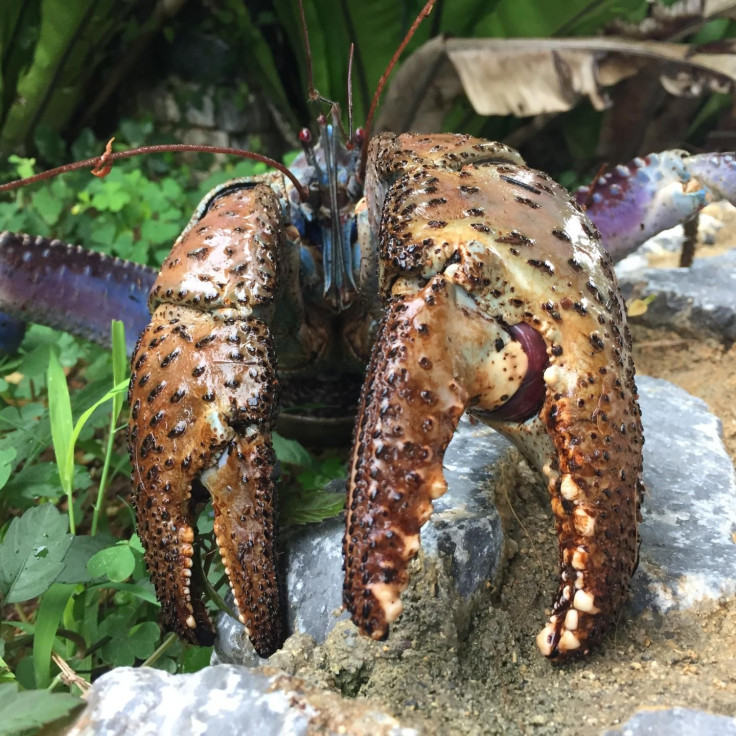Coconut Crab Claws Exert More Force Than Amateur Boxers

They are not just the largest species of terrestrial crustaceans. Along with being incredibly strong, coconut crabs can also use their claws to pinch with greater force than exerted by the punches of amateur boxers, or the bite of almost all land-living animals.
A study by Shin-ichiro Oka from Okinawa Churashima Foundation, Japan, and his colleagues found the coconut crab’s claws — which they use to fight as well as to get to food inside hard exteriors — can pinch with a maximum force of 3,300 newtons. In comparison, amateur boxers punch with a force of about 2,500 newtons and the maximum human bite exerts less than 800 newtons.
The study, titled “A Mighty Claw: Pinching Force of the Coconut Crab, the Largest Terrestrial Crustacean,” was published Wednesday in the journal PLOS One. Researchers studied 29 wild coconut crabs from the northern part of Okinawa Island.
They theorize: “The strong claws of the coconut crab are likely associated with the loss of shelter it underwent through the course of its evolution. It is generally accepted that coconut crabs are derived from a hermit crab ancestor, which would have used a hard gastropod shell shelter; this evolutionary split likely occurred during the Pliocene, 2.6–5.3 million years ago.”
Coconut crabs (scientific name Birgus latro) — a type of hermit crab — weigh up to just slightly over 4 kilograms (about 9 lb) but can lift up to about 30 kilograms of weight. Their claws are massive and at about 1 meter (3.3 feet) from leg to leg, their bodies are probably at the upper limit for modern terrestrial animals with exoskeletons.
© Copyright IBTimes 2025. All rights reserved.





















